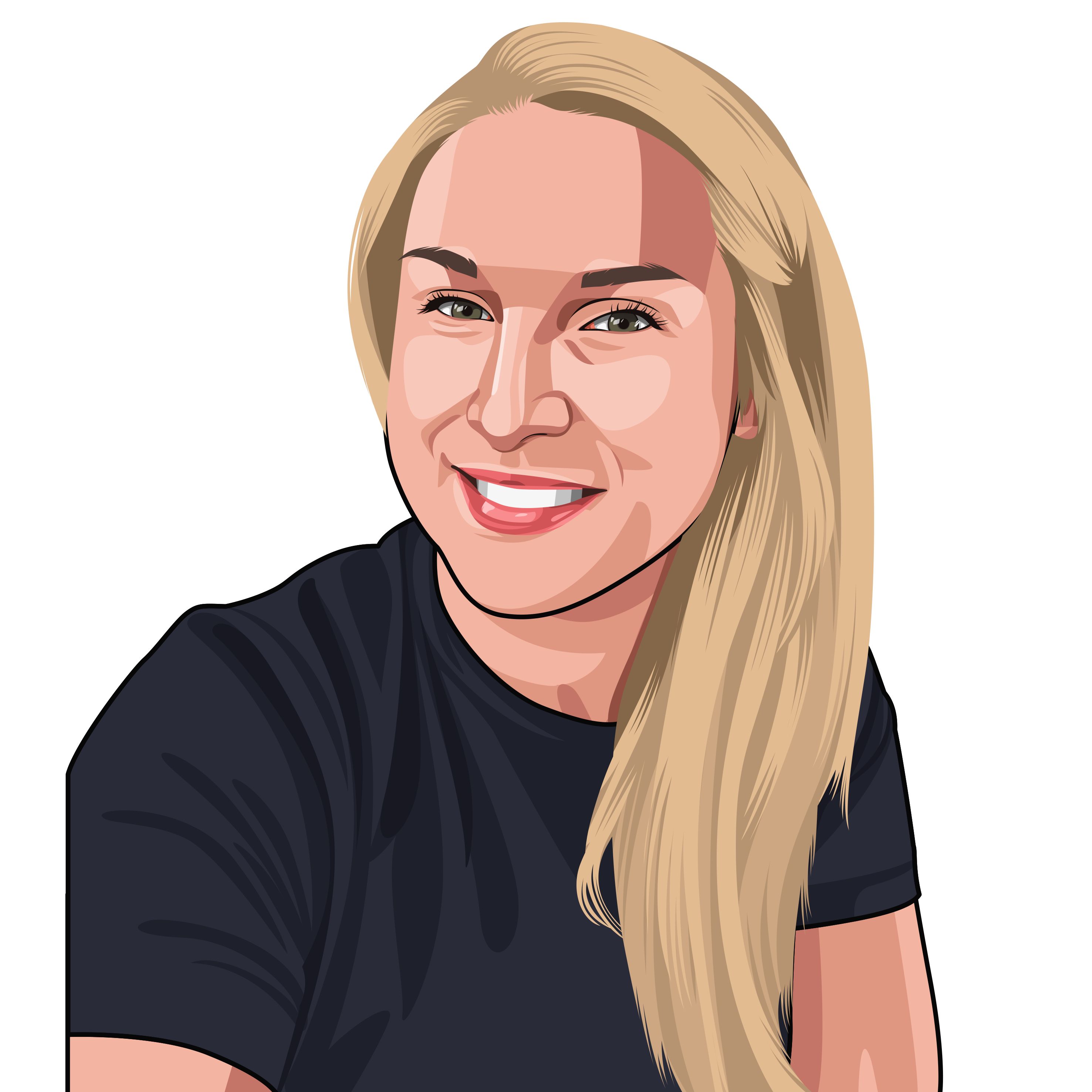Now is the time to decide if you are going to participate in building the future of work, or continue to wait on the sidelines. The task before us is clear, and anyone ready to do the work is welcome, but it is not easy.
That’s the message from Sheela Subramanian, co-author of the book How the Future Works and VP of Future Forum from Slack.
Work flexibility is more than just where
The big post-COVID theme is that work flexibility is what employees want. But it’s not just the freedom to work from home. According to the Future Forum, more people want more flexibility in when they work (93%) compared to where they work (76%).
Yet the idea of this level of flexibility is hard for a lot of executives to swallow who have built their careers by sacrificing long hours at the office.
Creating guardrails
Teams can start by establishing guardrails around times that are good for them to work. Most teams need no more than three hours of synchronous time during the day to do collaborative work. Outside of that, people can be free to set their own time. Sheela pointed out that it takes a lot of courage for someone early in their career to say they want to work early hours and not get pulled into 8pm calls. Leaders need to set the example and stick to agreements.
Being a digital-first organization
Sheela said “digital-first” means that organizations default to collaborating and measuring productivity based on digital platforms. Physical space can still be used intentionally to foster better relationships and intense collaboration sessions, but isn’t used by default. “Behavior and mindset are more important than your real estate strategy,” said Sheela.
She also pointed out that this is the perfect time to bake DEI-friendly structures into this new way of working. Many historically oppressed groups benefit from flexible agreements, and now is the time to put into practice inclusive actions to make work better.
We also need to revisit the role of a leader. Sheela says, “This is a complete reskilling for managers.” It’s a new era and everything has changed around what people expect from their leaders.
Get the book!
Welcome back to The Digital Workplace podcast. Today our guest is Sheela Subramanian. She is the VP of Future Forum at Slack. Hey, Sheela, how are you today?
Hi Neil, I’m great. Thanks for having me.
I’m super excited to talk to you. You have a brand-new book coming out very soon and we’re all excited about that. Tell us a little bit about the book and what led to it.
Yes. So, the book is called ‘How the Future Works’. It comes out on May 17. And what we’ve seen over the last two years is a fundamental shift in how we work. And people are asking for flexibility, not just in where they work but also when they work. And the origin story of this book is that we work with executives every single day and have collected a lot of wisdom along the way. And so, the intent of this book is to provide a how-to guide on bringing flexible, inclusive, and connected workplaces into organizations, and giving people the tools that they need to get there.
Excellent. Well, we’re going to dive into it pretty deep here. But first, a lot of people are writing stuff about the future and I’m sure half of them are robots. I want to make sure you are not a robot. So, your captcha question to prove that you’re a human is to share a favorite family tradition.
All right, I am not a robot. With my family, I have two young kids. Every evening, we have dinner together. That’s been one of the beautiful things of the last couple of years. And we talk about our highlights of the day, but also something we learned, what is a mistake that we made over the course of the day. And my kids are still kind of learning to embrace mistakes. And so, what we tend to do there is just like to teach them that it’s okay to make mistakes, and we can learn from them. We also after that have something called the ‘humming game’ where everybody needs to hum a song that’s been on their mind all day, and so that adds a little fun to dinner conversation as well.
That is a very human family thing to do. I love that. I love the idea of thinking about mistakes early on. I think the sooner we can get that out of our head that we have to be perfect and can’t make mistakes, the better. So, it’s great for you to do that.
Yeah, I wish I learned that earlier in life as well.
Yeah. All right. Well, let’s jump in. One of the great things I loved about the book when you started off, was talking about what you mentioned even before, was about the flexibility behind ‘when we work’ is actually probably more important to people than ‘where we work’. Can you dive into that a little bit more?
Yes. So, 95% of people that we have surveyed want flexibility in when they work. So, schedule flexibility is being able to break out of the confines of the nine to five. What we’ve seen is that people want flexibility within a framework. They want core work hours where they can come together with their teams to collaborate, to communicate, but they also want to embrace the lives that they’re living. And I thought that Dropbox which is cited in the book does it in a very good way. It’s called a nonlinear workday.
You have core time where you get together, but then you can live your life outside of those core hours and work when works best for you. And that enables people to pick up their kids from school, go grocery shopping in the middle of the day during a call, or be able to exercise and take care of themselves. And then what we’ve seen is that schedule flexibility is more important than location flexibility when it comes to employee engagement and experience overall.
Yeah, I would totally highlight that. I make use of my daily schedule flexibility much more than the remote options that I have in front of me. That’s a much bigger deal for me. For you, what time of day do you typically do your focus work?
Yeah. So, this is a really important point to make in terms of setting the tone from the top. I am a night owl. I do my best work between 9pm and 11pm. And what I’ve learned, as I’ve led teams, is that I shouldn’t be sending messages to people and asking them for things at 9:30. So, what I’ve learned to do is do a lot of my focus work during that time and to schedule my notes that I’m sending people to the next day, so they don’t feel pressure if they are not naturally night owls. But what I have found over the last two years not having to commute every day is that I get to drop my kids off at school, come home, eat a breakfast while catching up on some work, and then around 2:30 is when we end our core team work hours at Future Forum, I’m able to do a multitude of things – whether it’s exercise, get ready for the next day, prepare dinner or go pick up my kids. It’s led to a richer life where I feel like I’m a better employee as well as family member.
Do you find that, as you’re talking with other companies, is that a hard thing for people to let go of? Because it just seems like a lot of people I talk to, they still want to see the people in the office and that makes them feel good. I don’t know exactly where it comes from, but do you see that same thing, that even that schedule flexibility is a tough thing to let go of?
Yes. When I talk about schedule flexibility with executives, I get a lot of confused looks. Like how could that possibly work? You have meetings all day every day, how could you do ‘schedule flexibility?’ And that’s the source of the problem, is that we have learned to rely on meetings in a way that is completely counterproductive. And as a result, people are in meetings all day, and then they have to work all night to actually do their focus work.
And in the book, we talk about evaluating whether you need a meeting. Is the meeting for discussion, debate, a decision to be made or developing your people, then yes, call the meeting and be very focused in terms of what the agenda is and what you’re really hoping to achieve from it. But if it’s a status check where people have to go around and talk about how they’re doing, you don’t need a meeting for that. You can use other forms to get those status checks in place. So, it’s really changing how people think about a workday and also the ability to give your teams the choice in terms of agreeing on what core teamwork hours are rather than relying on top-down mandates. That’s also something that a lot of leaders are getting used to – control versus choice – is a balance that needs to happen.
What have you all found is a good window of time for your core work hours that you want to be overlapping so that if you need to share some things back and forth you can? What amount of time works for you all?
You know, it really depends on the type of team as well as time zones across the team. What I have found that works really well for smaller teams is two, two and a half hours a day, and then for larger teams it can expand a little bit. And even in terms of your role on the team, it can adjust accordingly. But you don’t necessarily need to rely on eight hours a day. Because that’s when your calendar gets filled up and your day gets filled with meetings. So, you know, between two to four hours every day is the ideal amount of time.
Yeah, I found the same. I also work across time zones. So, for me, early in the morning is best. And those slots get filled up pretty fast. We usually have about three hours where we’re overlapping with other folks that are there. But I find that time becomes that much more valuable to me and if somebody else tries to put in some junk meeting during that time, I’m like, ‘I can’t, I just can’t do it.’ Because I only have this amount of time and so I’ve got to make the best out of that time. So, I think, like you’ve said in the book too, really looking at the meetings, looking at how we’re using that time and realizing how valuable time is, is really essential.
Yeah. And something you said Neil prompted a thought. Oftentimes, we’re asking individuals in the organization to set their own boundaries. And that takes a lot of courage, oftentimes to say, ‘This is my boundary’ and it takes a lot to really stand up for it. And so, it’s really important for leaders to set guardrails from the top. A guardrail could be every team decides what its work hours are, like on a regular basis, and they’re between two to five hours. That’s the behavioral guardrail.
And then you, as a team, can figure out what the appropriate time is, and the time slot based on the day. But setting those guardrails is a really good tone to set from a leadership perspective. But back to that conversation about choice versus control, you’re giving them the guardrail and they have the choice to figure out how to make it work best for them. And it can also be applied to even the role of the office and how frequently people need to come into the office, rather than every single day, it could be a certain number of days a week.
Let’s get into what the office is good for now. I think this is a great chance. A lot of people that are in our world talking about digital work often get criticized for, ‘Hey, you guys are just saying that the office is dead, no one’s going back in there anymore.’ But the office is actually really useful for specific situations. So, what are some things you love to use the office for?
Yes, the office is very much alive and going flexible, going digital first, does not mean that the office no longer has the use. What we’re seeing from our research is that 80% of people want to go into the office periodically to foster connection, camaraderie, as well as to collaborate with one another, whereas only 20% actually want to go in for solo, focused work. And the office is a great place to bring people together, onboard new members and get them to know each other and talk about hairy topics with one another. But it doesn’t mean that it has to happen every day or every single week.
In terms of flexibility, you need predictability. So, giving your teams the predictability of ‘our expectation is that we’re going to come together once a month, on the first Wednesday, and we’re going to talk about these topics and get to know each other a little bit better. That’s far healthier and that’s a better guardrail to set versus coming into the office as you see fit and if you don’t, you don’t. I’ll be in the office as an executive. And what we’re seeing as a result of the looser policies is that proximity bias or favoritism towards someone who is close by or in the office, that’s where it breeds. So, it’s really important to be intentional about the guardrails that you’re setting and the role of the office in order to prevent any inequities from happening with a flexible work model.
Yeah. It’s like this gravitational pull whenever, especially one of the executives, a leader, is in the office, then they just like to see people around them. And if you really want their time, you can send them a Slack message or whatever. But hopefully they see it in time, maybe not. But man, if you’re in the office, you can just tap them on the shoulder right there. That’s much easier. You realize, hey, if I’m in the office more, I can get more done. And it just all goes downhill from there. Right?
Yeah. And what we’re seeing right now from our data is that the people who want to come into the office are usually men. They’re white employees in the US, they’re executives. Whereas those who want a more flexible work model are employees of color, working parents, and women. So, in many ways, we’ve seen a leveling of the playing field in the last couple of years with regards to increased sense of belonging for those who have always wanted to work flexibly but have not had the chance. And by not being intentional about proximity bias and the risk that it could run, what we can see is further divides between those who are in the office full time and those who choose to work flexibly, especially when it comes to promotion, time, and career mobility.
What do you say to executives when you interact with them and they give this feeling of, okay, I want to offer flexible work, but when people take it, they feel like I’m being very benevolent and giving this, I’m being very kind and generous in this? But if they take it, in the back of my mind I’m thinking they’re slacking off a little bit. They just want to mooch off this policy. I see that decently common in some of the circles I’m in. How do you respond to that?
Oh, there’s multiple ways here but the first is, I think it’s important for our leaders to reflect on the last two years and realize that productivity actually went up and employees were able to do their work regardless of where they were located. That’s the first thing. The second is, it’s really important for leaders to shift from activity-based merit or activity-based measurement to outcomes-based measurement. And what I mean by that is that in the past, I’ve been a recipient of this, people are rewarded for responding to messages the quickest or being the first-in-last-to-leave. That doesn’t mean anything. The number of hours you’re spending in the office does not mean that you’re producing the value, the outcomes that are necessary for your role.
So, it’s important to shift, especially when it comes to promotion conversations, when it comes to stretch opportunities, it’s important to shift the conversation from ‘this person is a hard worker because they respond to my email at midnight’ to ‘this person hit all of their numbers and all of their targets this past quarter or this past year’. So, that’s a really important point to make.
And often not least, there’s a lot of grumbling about the great resignation. The great rethink is the way that I like to think about it. But what we’re seeing is that 72% of employees who are not happy with their current level of flexibility, really do not feel like they’re trusted by their leaders, they are open to looking for a new opportunity in the next year. So, it’s really important for leaders to listen to their employees and trust them. That’s what they want right now, especially as they love to retain and engage their talent.
Yes. I like that mention of ‘hard working’. I feel like it’s a trap we get called into and pulled into all the time, of thinking like if somebody would doubt that I’m working hard, or I’m getting my goals done, like probably say, ‘Well, look at all the hours I’m putting in, look at all the things I’ve been doing.’ And that goes not just for an individual but for a team. If somebody wants to criticize a team and you’re the leader, like, ‘Man, my team is so hard working. We’re in the office all the time, we’re doing all the things.’ And those signals we usually put forward are just based on surveillance or based on they were in the office, some kind of really junk metric about what actually means to be productive.
Absolutely. And it’s the way that the work is operated for a while.
Good. You introduced a term which I love which is called ‘being digital first’ in your approach in the office. Tell us why you picked that term instead of remote first or hybrid first or something else?
Yes. So historically, we have been ‘office first’. The office has been the center or the nucleus. Digital tools have complimented the office. And over the last two years what we have seen is that that’s actually shifted. We are now communicating, like now between you and me, we are collaborating, we’re doing most of our work digitally, and we’re using the office to help us foster connection and to help us build trust between the teams. And the reason why it’s important to use digital first rather than remote first is that everybody has different needs. One person could choose to be in the office full time, another is taking more and more hybrid models. It’s really important for leaders to signal that digital is where it happens, this is the role of the office, but also just recognize everybody’s individual needs, rather than mandate one form of working over another.
Yeah. Seeing digital first means that the digital platform becomes a central, like you said, of the productivity metric. Like if you know, people are actually getting their work done, where do you go to check that? If you check the office and the logs when people checked in or do you look at your OKR system, or whatever it is you’re using to measure that too. The big thing I hear a lot is culture. Man, I can’t take my culture digital. Okay, maybe productivity, yes. That we proved that we could do that. Collaboration, okay. Maybe some people are more comfortable in the office, but it’s true, we can collaborate digitally. But you throw the culture word out there, and they’re like no. You crossed the line. We can’t do culture digitally. How do you respond to that?
Yes. So, it’s back to the original point of ‘being digital first does not mean you’re never in-person’, whether it means to build that trust to continue to build that culture in-person or digitally. I think it’s really important for leaders to be really intentional about what the culture is about and use this as an opportunity to better define that and vocalize that to employees. What we advise executives to do in the book is really align on what are your core principles and values. What are you as an executive team trying to convey to your broader employees and how is that then exhibited in day-to-day behavior? So, when it comes to culture, yes, foster that, cultivate that in-person, but also be really intentional about what are the basics of your culture and how that is ultimately exemplified in how your leaders lead, how your managers manage, and how you set the tone.
Yeah. Tell us more about these principles, the ‘why’ behind you wanting to introduce flexible work policies and different things. You’ve seen a lot of companies, you’ve mentioned a few, Dropbox and others that are there that you’ve interacted with and worked with. What are some of the favorite principles you’ve seen that companies come up with around flexible work?
Yes. So, it’s really interesting to think about the basis of the principles themselves. And so, in our executive working groups, with Future Forum, we’ve worked with a range of companies to help them develop what their principles should be. Before we get into that, I want to just define what core principles are. They drive your culture as well as your business. And so, it’s not just the number of days you expect people to come into the office or what your real estate strategy should be. It’s more about, what is your behavior and mindset change.
So, the four principles that we talk about in the book as well as I personally like are maintaining a learning mindset. You’re not going to get all of this right on the first trial. But if you’re telling your broader organization, ‘We’re experimenting with these things, we want your feedback, and we want to hear what’s working and what’s not working’, that sets a different tone than ‘here is a policy that I’m rolling out to you’, out of the box that they’ve given no input to. So, that’s one principle that we have seen that works in an organization. The second which I alluded to earlier is rather than top-down mandates, give your teams the autonomy that they need to do their work effectively. Because global guidelines have rarely been effective, and they’re going to be less effective, especially with return to office policies.
And another one is, equitable access to opportunity. Diversity, equity, and inclusion, they’ve been terms that have been increasingly prevalent over the last few years. What does that even mean? And DEI and the future of work planning, they go hand in hand. So, if you’re really invested in inclusion and equity, think about how that is reflected in the principles that you’re pushing forward and also the policies that you’re putting forward in terms of the future of work.
Can you give us a few examples, especially with DEI and some of the specific policies to be able to come up with? What are some things that maybe some leaders aren’t aware of that their policies are affecting, and they just need to be aware of those things?
Yeah. So, what we’re seeing from our research is that two-thirds of companies or two-thirds of executives are actually not including employees in their return to office policy planning. And a key part of inclusion is that you need to get feedback across the organization. And so, what we’ve seen as effective is building a task force rather than as Helena Gottschling from Royal Bank of Canada said, “Avoid being the focus group of one. Ensure that you’re getting feedback from your team across functions, towns, locations, as well as levels so that you’re putting out a policy that’s more inclusive of everyone from different people within the organization.” So, I think that’s a really effective way of kind of walking the walk when it comes to inclusion.
Another one, and we alluded to this earlier is around proximity bias. So, if you have policies in place, ensure that they are continuing when it comes to promotion time. So, during a promotion conversation, ensure that you have the metrics that someone needs to be evaluated by and ensure that they don’t necessarily get evaluated by ‘I know that they work hard because they are in the office.’ Set those guardrails and guidelines early on to avoid the proximity bias trap. Those are two ways in which diversity, equity, inclusion can extend beyond employee resource groups or donations during Black History Month to more meaningful changes across an organization.
Last but not least, I think in terms of inclusion that’s super important and oftentimes gets overlooked is reskilling managers. Managers have been trained to be the gatekeepers, the ones who are asking for status checks, and most managers have not been trained to lead distributed teams. So, they need to shift from being the gatekeepers that they’ve been trained to be to coaches, empathetic partners that they need to be, especially in this distributed world. And I think that more investment needs to happen in the coming months and years around that.
Yeah, let’s dive into that a little bit more. I totally agree. I think the definition of what a manager or a leader was maybe 10 years ago needs to totally re-shift. In a distributed team, you’re not really so much a project manager or gatekeeper or trying to find those status checks. You have a totally different role now. You’re checking in with people, you’re making sure that they’re mentally doing well, you’re making sure that the support systems around them are well, and it just feels like a very different role to be a manager. So, what are some of those types of things you would want to see people reskill then?
Yes. So, one thing that it comes back to is activity-based tracking to measure outcomes. Managers need to set those outcomes and make it really clear to their employees what ‘good’ looks like. Because it can no longer be ‘you’re a rock star because you work all the time’. I think broadly though managers actually need to get to know the people on their teams.
One thing that we have linked to in the book, or we have in the toolkit in the back is the personal operating manual. Asking everybody in your team to fill out a personal operating manual with regards to what are your motivators, what are things that bum you out, and what are things about you beyond who you show up as, at work. Tell me more about your family. Tell me more about your schedule. Those personal operating manuals are really important because it enables people to talk more about their circumstances beyond trying to get to know them on the fly in a distributed world.
So, it’s really important for managers to get to know their employees and figure out how to help them work best rather than asking them to assimilate or adhere to how the manager works. So, that’s one key area beyond setting outcomes.
And last but not least, transparency is a big part of being a manager. Like saying, ‘I don’t know’ or ‘I need your help’. And as I mentioned earlier, most managers aren’t trained to do that. Showing that vulnerability is actually what employees want increasingly in a distributed world and managers need to get more comfortable with that. So, it’s about moving from taskmaster to empathetic coach. And that’s a big shift for many people to make. And as a result, some people may not be cut out to be a manager, and that’s okay. So, leaders need to provide progression or mobility for people who choose not to manage so they can continue to grow in their careers.
Excellent, excellent. I often see it as these roles that we’re going to be participating in are going to be more human than perhaps they were before. We’re not trying to train robots anymore, because we actually have the robots now that we can train to do some of these other tasks. So, it’s like, how do you get the best out of the humans on your team. And that’s a much different mindset from what we were before where we were trying to treat humans as robots and trying to squeeze the most of that kind of work out of them. It’s a very different mindset. I’m glad you guys have given a lot of great insights into that.
Yeah, and I think one more thing around that is, just invest in your managers. Yes, there’s training that happens annually or twice a year, but it’s really important to invest in coaching for your managers so they have a safe space to go to on a regular basis to talk more about their challenges. Because management is a lonely place to be and facilitating networks between managers, but also giving managers an opportunity to talk to a third party, it helps in their development. And also, it’s an unbiased view of how they should operate and how they should grow and develop in their own craft.
Yeah. Well, Sheela the book is great. One of the interesting parts of it is that there are three authors. You guys collaborated together which itself is a mind-blowing thing in a distributed world. How was that process like?
It was really fun, actually. So, Helen, Brian and I are all co-founders of Future Forum. And when this opportunity came up, we said let’s figure out how to bring each of our strengths to this process. So, we divided chapters up and gave feedback along the way. And it was a sprint. We wrote this book in about two months. So, it was great.
Yeah, wow, amazing. Well, highly recommend the book, make sure you get it. May 17th you said is the release date.
May 17th, that’s correct.
Alright. We’ll have links in the show notes. Sheela, it’s always great to hear from you and to hear what you’re learning about the future of work, and thanks for sharing with us.
Thank you, Neil. It’s great to be here.
Sheela Subramanian is Vice President and co-founder of Future Forum. She holds 20 years of experience building high-growth global teams across Google, Slack, and startup organizations. As a champion for workplace equity, her work is cited in the Wall Street Journal, New York Times, Harvard Business Review, Fast Company, and other publications. Sheela earned her BA from Stanford University and MBA from Harvard Business School and is the mother to two magical daughters. She is the coauthor of How the Future Works: Leading Flexible Teams to Do the Best Work of Their Lives (Wiley; May 2022) with Brian Elliott and Helen Kupp.












